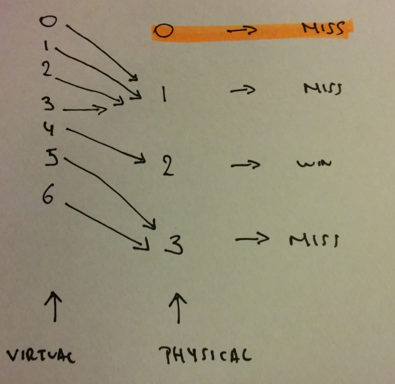Spinning the wheel: clustering and near misses
The previous post showed a simple model casinos use to manipulate the odds. Instead of relying on the physical wheel for randomness, they rely on a virtual list of indexes that maps to the physical wheel.
Using that same model, it’s easy to fiddle with the virtual indexes so that they map to misses right next to the winning pocket, creating “near misses”. “Near misses” make players feel less like losing, since you “almost won”. Casinos use this technique to get the next spin out of you.
Let’s create more specific labels - a label for each individual pocket.
type WheelSpaceLabel =
| Miss1
| Miss2
| Miss3
| Win
The winning pocket is in the physical wheel at index two. We need the virtual indexes to make clusters next to the winning label. Four indexes map to Miss2, one maps to Win and three map to Miss3. We intentionally ignore Miss1.
let physicalWheel = [Miss1; Miss2; Win; Miss3] |> Seq.ofList
let virtualWheel = [1; 1; 1; 1; 2; 3; 3; 3] |> Seq.ofList
Spinning the wheel one million times reveals the pattern; Miss1 gets ignored, while we hardly ever win but very often “just” miss.
Results seq [(Miss3, 37501); (Miss2, 49901); (Win, 12598)]
Since the law states that randomness and visualization are two separate concepts, casinos are free to operate in this gray zone, as long as randomness stays untouched.
